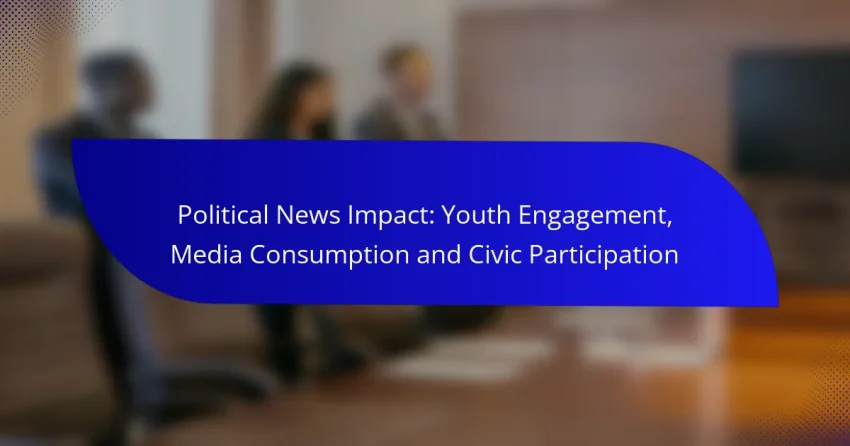Political news plays a crucial role in shaping youth engagement by enhancing their awareness of social issues and inspiring them to participate in civic activities. As young individuals consume various media, their understanding of the political landscape deepens, which can lead to increased involvement in democratic processes and community initiatives.
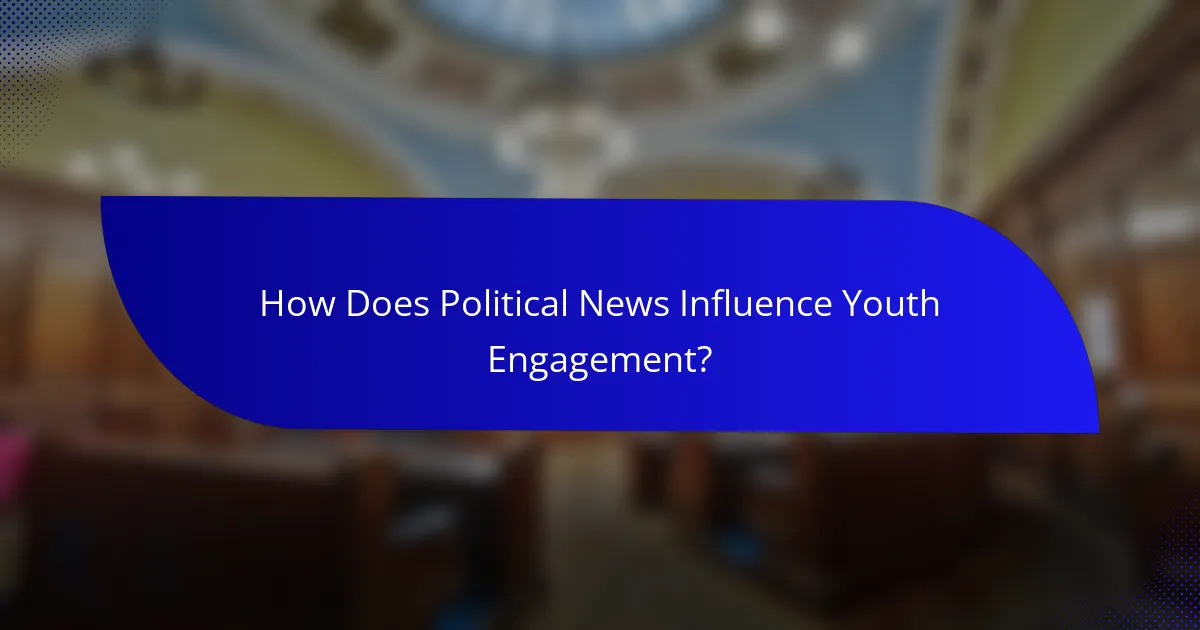
How Does Political News Influence Youth Engagement?
Political news significantly influences youth engagement by shaping their understanding of social issues and motivating them to take part in civic activities. As young people consume news, they become more aware of the political landscape, which can lead to increased participation in democratic processes.
Increased awareness of social issues
Political news plays a crucial role in raising awareness among youth about pressing social issues such as climate change, inequality, and human rights. By covering these topics, media outlets inform young people about the challenges facing their communities and the world.
This awareness often translates into a desire to advocate for change, whether through social media campaigns, community organizing, or participation in protests. Engaging with news helps youth understand the importance of their voices in addressing these issues.
Motivation to participate in elections
Exposure to political news can motivate young individuals to participate in elections, as they recognize the impact of their votes on issues they care about. News coverage of upcoming elections, candidate platforms, and voter registration drives can inspire youth to take action.
For instance, initiatives like “Rock the Vote” in the United States aim to increase youth voter turnout by providing information about the electoral process. Such efforts highlight the power of youth engagement in shaping political outcomes.
Impact on political identity formation
Consuming political news influences the formation of political identities among young people. As they engage with different viewpoints and narratives, they begin to develop their own beliefs and values related to governance and civic responsibility.
Through discussions, debates, and exposure to diverse media sources, youth can refine their political identities. This process is essential for fostering informed and active citizens who are likely to engage in civic activities throughout their lives.
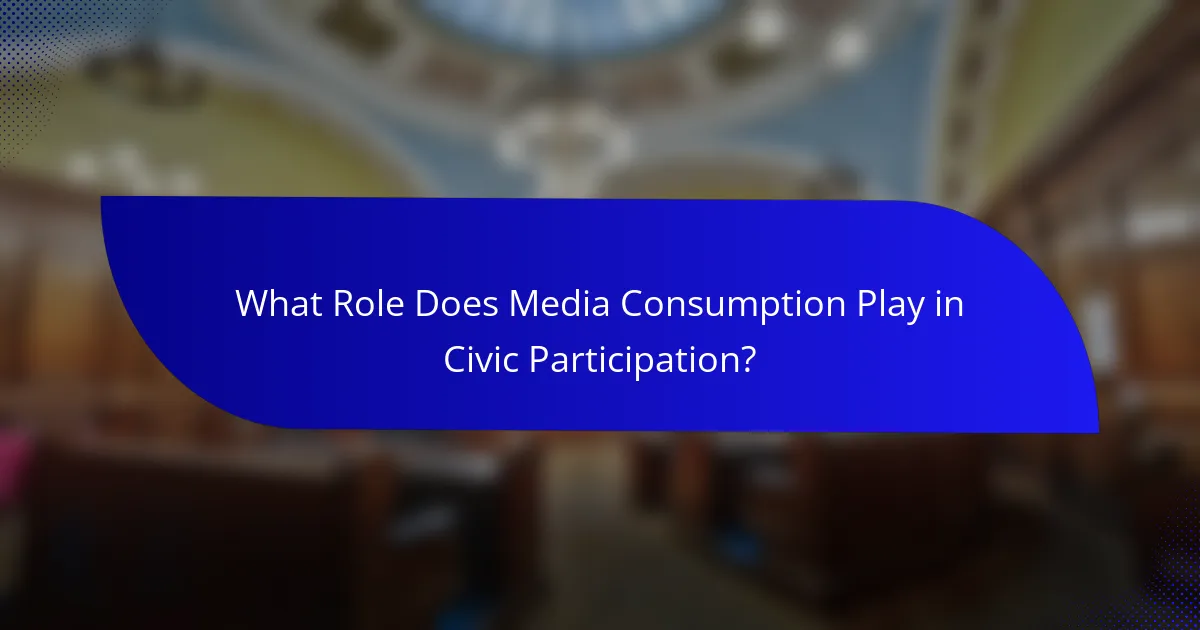
What Role Does Media Consumption Play in Civic Participation?
Media consumption significantly influences civic participation by shaping how individuals engage with political issues and community activities. The type of media consumed can determine the level of awareness and motivation to participate in civic duties, such as voting or community organizing.
Preference for digital news platforms
Many young people prefer digital news platforms over traditional media, as they offer instant access to information and diverse viewpoints. This shift has led to increased engagement in civic matters, as users can easily share articles and discuss issues on various platforms.
Digital platforms, such as news websites and mobile apps, often provide interactive content that encourages users to participate in polls or comment sections, fostering a sense of community involvement. This preference for digital news can enhance awareness of local and national issues, driving civic action.
Influence of social media on opinions
Social media plays a crucial role in shaping public opinion and influencing civic participation. Platforms like Facebook, Twitter, and Instagram allow users to share their views and mobilize others around specific causes or events.
Through algorithms that prioritize engaging content, social media can amplify certain narratives, which may lead to increased activism or awareness of social issues. However, users should be cautious of misinformation, as it can skew perceptions and hinder informed civic engagement.
Trust in traditional vs. new media
Trust levels in traditional versus new media vary widely among different demographics. While some individuals still rely on established news outlets for credible information, younger audiences often turn to social media and online platforms, which can lack rigorous fact-checking.
To navigate this landscape, it’s essential for consumers to critically evaluate sources and seek out reputable information. Engaging with a mix of media types can help ensure a well-rounded understanding of civic issues and encourage informed participation.
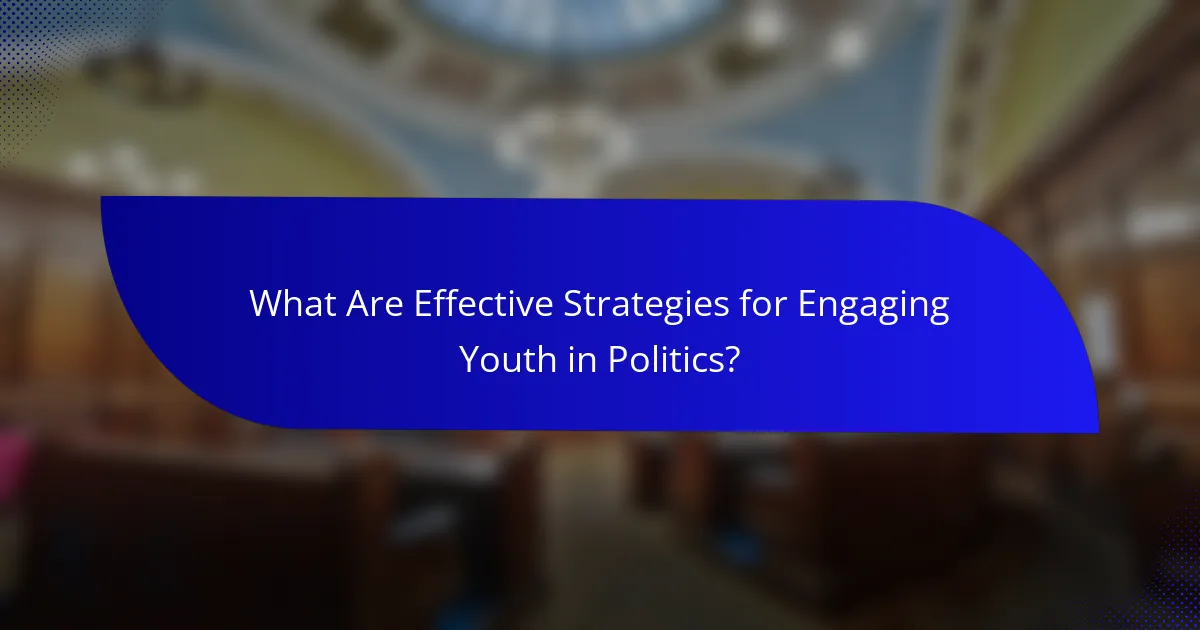
What Are Effective Strategies for Engaging Youth in Politics?
Effective strategies for engaging youth in politics include leveraging modern communication tools, creating interactive educational experiences, and utilizing influential figures. These approaches can foster a deeper understanding of civic responsibilities and encourage active participation among younger demographics.
Utilizing social media campaigns
Social media campaigns are a powerful way to engage youth in political discourse. Platforms like Instagram, TikTok, and Twitter allow for the dissemination of information quickly and creatively, often using visuals and short videos to capture attention.
To maximize impact, campaigns should focus on relatable content that resonates with young audiences. Using hashtags, challenges, or viral trends can enhance visibility and encourage sharing, making political messages more accessible and engaging.
Creating interactive civic education programs
Interactive civic education programs can significantly boost youth engagement by making learning about politics enjoyable and relevant. Workshops, simulations, and gamified experiences can help young people understand political processes and their role within them.
Consider partnering with schools or community organizations to implement these programs. Offering incentives, such as certificates or community service hours, can further motivate participation and enhance the learning experience.
Leveraging influencers for outreach
Influencers can play a crucial role in reaching youth by lending their platforms to political causes. Collaborating with individuals who have a strong connection to their audience can amplify messages and encourage young people to engage with political issues.
When selecting influencers, focus on those who align with the values of the campaign and have a genuine interest in civic participation. Authenticity is key; audiences are more likely to respond positively to messages that feel sincere and relatable.
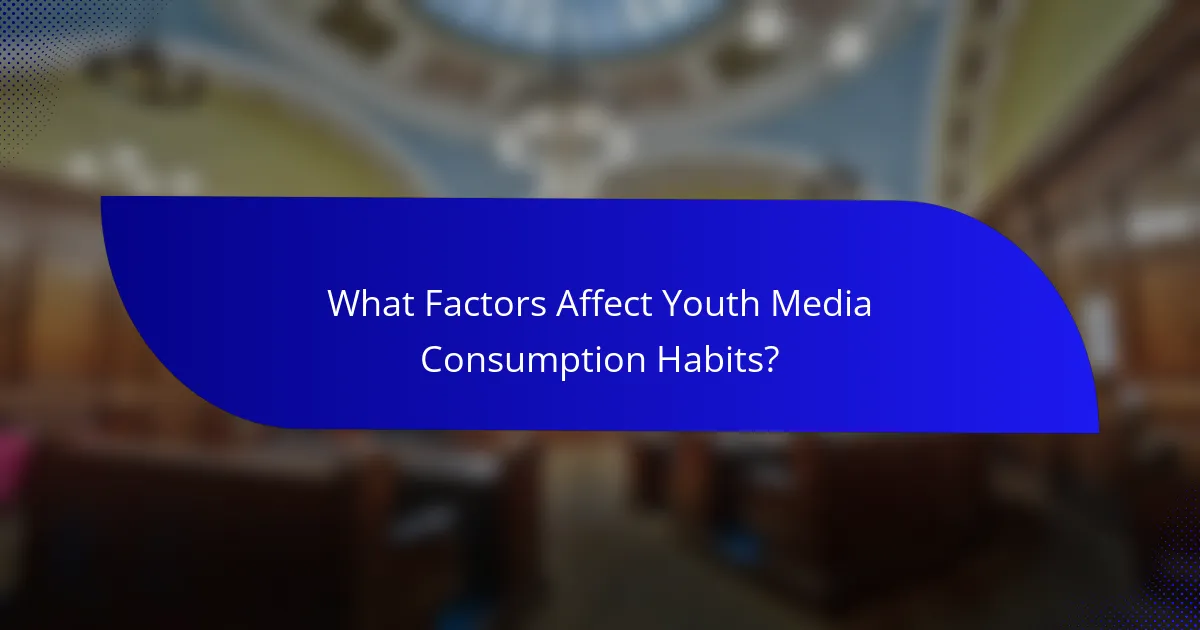
What Factors Affect Youth Media Consumption Habits?
Youth media consumption habits are influenced by several key factors, including access to technology, content preferences, and peer influence. Understanding these elements can help in tailoring media strategies that effectively engage younger audiences.
Access to technology
Access to technology is a primary factor shaping youth media consumption. With the widespread availability of smartphones, tablets, and laptops, young people can easily access a variety of media platforms anytime and anywhere.
In many developed countries, nearly all youth have access to the internet, while in developing regions, access may vary significantly. This disparity can affect the types of media consumed, with those in urban areas often having more diverse options than their rural counterparts.
Trends in content preferences
Content preferences among youth are constantly evolving, often driven by trends on social media platforms. Popular formats include short videos, interactive content, and user-generated material, which tend to resonate more with younger audiences.
For instance, platforms like TikTok and Instagram have surged in popularity due to their emphasis on visual storytelling and brevity. Marketers and content creators should focus on these formats to effectively capture the attention of younger viewers.
Impact of peer influence
Peer influence plays a significant role in shaping youth media consumption habits. Young people often turn to their friends for recommendations on what to watch, listen to, or engage with online.
This social aspect can lead to trends where certain shows, music, or online challenges gain popularity rapidly. Understanding the dynamics of peer influence can help brands and organizations create campaigns that leverage social networks to enhance engagement.
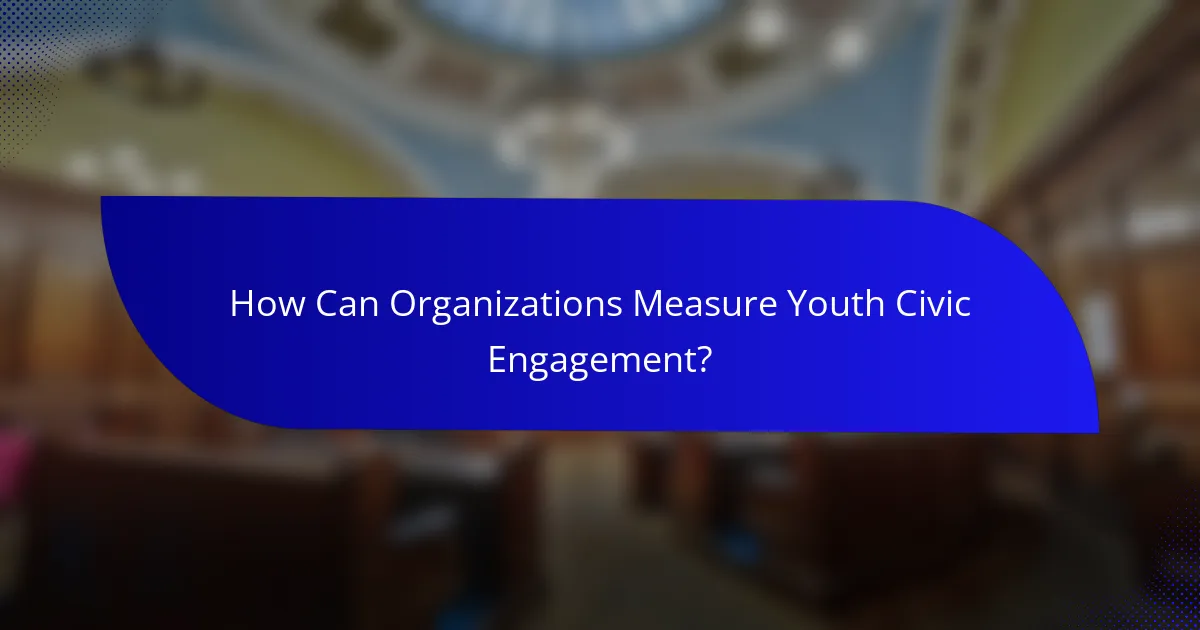
How Can Organizations Measure Youth Civic Engagement?
Organizations can measure youth civic engagement through various methods that capture participation levels and attitudes. Effective measurement often combines quantitative data, such as survey results, with qualitative insights from social media interactions.
Surveys and polls
Surveys and polls are essential tools for gauging youth civic engagement. They can assess attitudes toward political issues, voting intentions, and participation in community activities. Organizations should aim for a diverse sample to ensure representative results.
When designing surveys, consider using a mix of closed and open-ended questions. Closed questions provide quantitative data, while open-ended responses can reveal deeper insights into motivations and barriers. Aim for a response rate of at least 20-30% for meaningful analysis.
Social media engagement metrics
Social media engagement metrics provide real-time insights into youth civic engagement. Key metrics include likes, shares, comments, and overall reach of posts related to civic issues. These metrics can indicate how effectively organizations are communicating with younger audiences.
To analyze social media engagement, track specific campaigns over time and compare engagement rates across different platforms. Tools like Google Analytics and social media insights can help organizations understand which content resonates most with youth. Focus on creating shareable content that encourages interaction and discussion.
